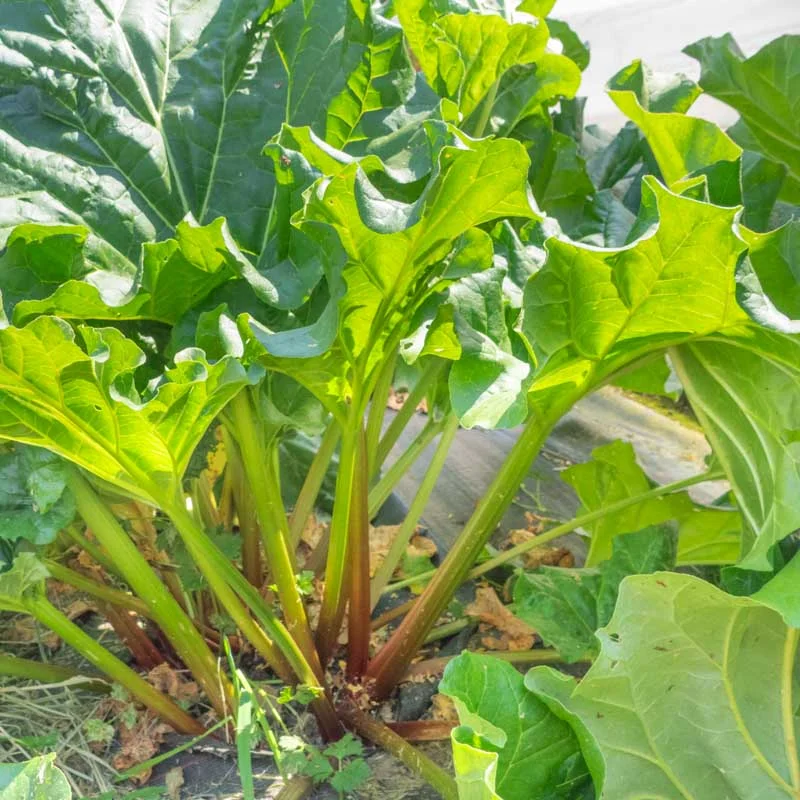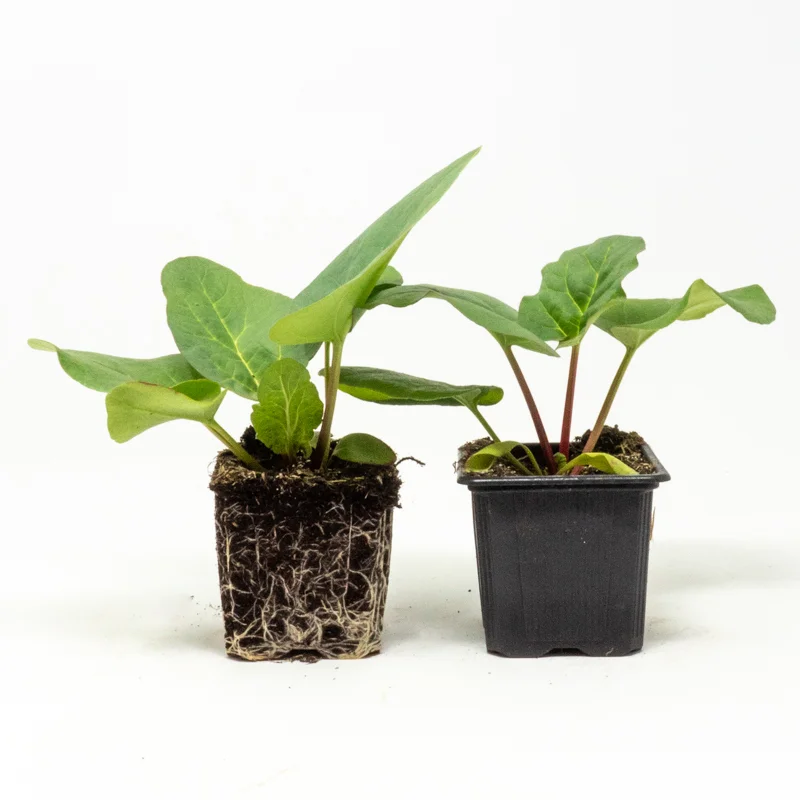Rhubarb Victoria 2 organic plants
Plant Rhubarb Victoria in your garden for abundant harvests of delicious, fleshy ribs with inimitable sweet and tart flavors! This perennial plant offers bright red-tinted green stems, ideal for all dessert recipes; pie, compote, marmalade, and jam. Cultivate an explosion of sweet-tart flavors in your vegetable garden, a must for gourmet dessert lovers and gardeners in search of seasonal delights!
Like all rhubarb, its leaves are rich in oxalic acid and should not be eaten.
How do I grow rhubarb?
Easy to grow, rhubarb appreciates a semi-shaded spot in the vegetable garden or backyard, as well as rich, cool, deep soil. Take the time to choose the right spot, as rhubarb is a large-scale perennial.
- Prepare the soil before planting, incorporating well-decomposed manure or compost.
- Plant rhubarb in spring, in March or April, in cooler climates, or in autumn, in October, in warmer climates.
- Space plants 1 m apart in all directions.
- Pack well around the plants.
- Water and mulch.
Water regularly throughout the season, especially in hot, dry weather. Cut off flowering stems as soon as they appear, to avoid exhausting the plant.
When to pick rhubarb?
Harvest rhubarb stalks in May and June, and in autumn in regions with humid climates, as needed or in a single harvest.
Cut two-thirds of the best stems flush with the ground to give the plant time to regenerate, and harvest a second crop in September.
Shipping and delivery of Rhubarb Victoria plants
Orders are dispatched every Monday.
- Shipment to mainland France only.
- Shipping cartons designed for optimal plant protection.
- Free shipping does not apply to plants.










